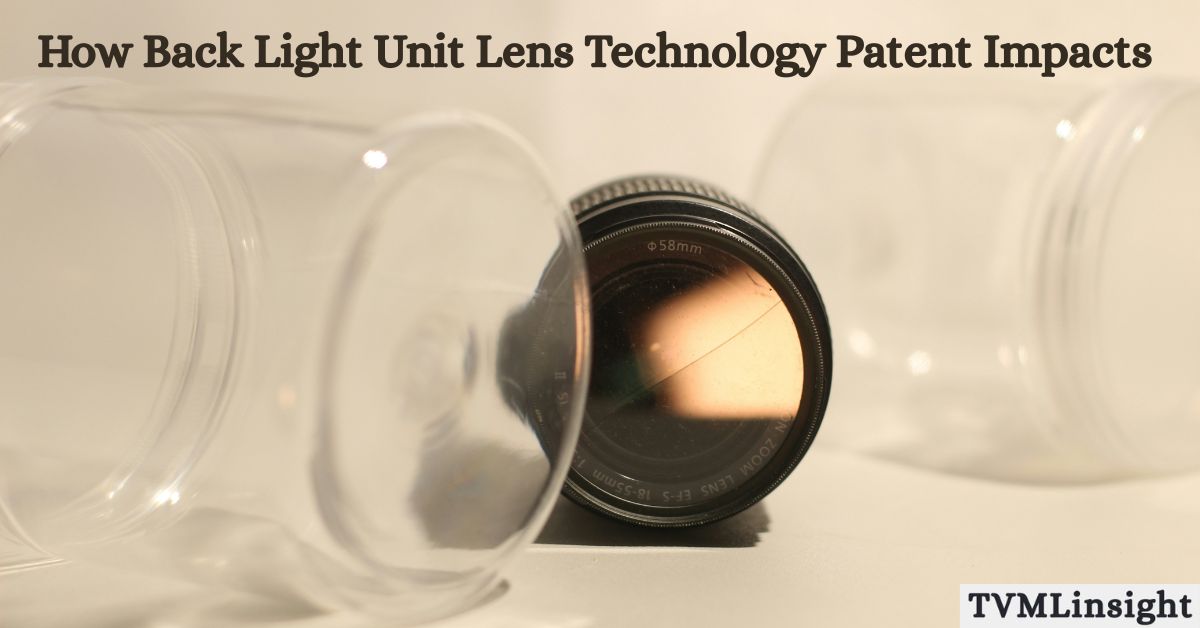
How Back Light Unit Lens Technology Patent Impacts
The Back Light Unit Lens Technology patent is shaping the future of modern display devices. From televisions and smartphones to laptops and automotive displays, this innovation is transforming how people experience brightness, clarity, and visual comfort. Patents like these don’t just improve display quality—they also drive energy efficiency, influence the global supply chain, and create opportunities for new consumer electronics.
Instead of being just another technical upgrade, this patent impacts intellectual property rights, R&D investments, and even market competition. To understand why, let’s explore how the Back Light Unit Lens Technology patent is influencing industries worldwide.
Table of Contents
Why Back Light Unit Lens Technology Patent Matters
The Back Light Unit Lens Technology patent matters because it introduces a smarter way to control light distribution in displays. Traditional backlighting often causes uneven brightness, glare, or higher power consumption. This innovation solves those problems, making screens sharper, more efficient, and more user-friendly.
Driving Display Quality
- Enhances uniform brightness across the screen with an advanced lens design
- Reduces glare and improves viewing comfort for long-term use
- Provides vivid color reproduction for media and gaming enthusiasts
With these benefits, manufacturers can deliver next-generation smart displays that appeal to both professionals and everyday consumers.
Supporting Energy Efficiency
- Reduces power usage in smartphones and laptops
- Extends battery life in portable devices
- Helps manufacturers design eco-friendly displays that align with sustainability goals
In today’s world, where sustainability is a priority, energy-efficient patents like this one are a game-changer.
How Back Light Unit Lens Technology Boosts Consumer Electronics
The real power of the Back Light Unit Lens Technology patent lies in its impact on consumer electronics. From the living room to the car dashboard, it improves everyday user experiences.
Applications in Different Devices
- Televisions: Delivers cinema-quality clarity and brightness
- Smartphones: Enable thinner designs with energy savings
- Laptops: Improves screen readability in all lighting conditions
- Automotive displays: Enhance safety with glare-free dashboards
By improving both design and functionality, this patent ensures that companies stay competitive in the global electronics market.
The Patent’s Role in Market Competition
Patents are more than technical documents—they are intellectual property assets that shape business strategies. The Back Light Unit Lens Technology patent strengthens a company’s position by giving it legal rights and market control.
Business and Legal Impacts
- Creates opportunities for licensing deals and strategic partnerships
- Protects against patent infringement lawsuits
- Increases company valuation in the global supply chain
Interestingly, such patents often push competitors to innovate faster, leading to rapid progress in the display technology industry.
Table – Impacts of Back Light Unit Lens Technology Patent
| Impact Area | Effect on Industry |
| Display Quality | Enhances clarity and brightness |
| Energy Efficiency | Reduces power consumption, boosts sustainability |
| Consumer Electronics | Improves TVs, smartphones, laptops, and cars |
| Intellectual Property | Strengthens patent rights and market position |
| Global Supply Chain | Influences manufacturing costs and partnerships |
| Future Displays | Enables flexible, AI-powered, glare-free designs |
Ethical and Future Considerations
While the Back Light Unit Lens Technology patent is a big step forward, it also raises ethical and competitive questions. Should one company control such an essential part of display innovation? How can the industry balance patent protection with open innovation?
Looking Ahead
- Future R&D investments will expand on this patent
- May lead to next-generation flexible displays in smartphones and TVs
- Could accelerate the adoption of AI-driven adjustments in display systems
The future of artificial intelligence integration in displays may combine with this patent to deliver smarter, adaptive brightness technologies.
Case Study: Industry Impact Example
Consider how Samsung or LG could apply the Back Light Unit Lens Technology patent. By integrating it into OLED and LED displays, they could:
- Deliver ultra-thin TVs with better color accuracy
- Improve smartphone displays with lower battery drain
- Gain a competitive edge in premium electronics markets
- Reduce production waste, aligning with eco-friendly goals
Such examples show how this patent goes beyond theory and directly shapes real-world consumer electronics.
Conclusion
The Back Light Unit Lens Technology patent is more than a technical milestone—it is a force that impacts display quality, energy efficiency, and the global electronics market. By protecting intellectual property and pushing innovation, it ensures that future consumer electronics deliver clearer, smarter, and more sustainable performance.
For students, professionals, and industry leaders, understanding how this patent reshapes modern display devices is essential. It represents not just a technological upgrade, but a step toward smarter, greener, and more efficient innovations in everyday life.
FAQs
Q1: What is Back Light Unit Lens Technology?
It is a display innovation that improves brightness, clarity, and energy efficiency in screens.
Q2: How does this patent improve consumer devices?
It enhances televisions, smartphones, laptops, and automotive displays by offering better clarity and lower power consumption.
Q3: Why is the patent important for businesses?
It protects intellectual property, supports licensing deals, and helps companies compete in the global supply chain.
Q4: Does it impact sustainability?
Yes. It reduces energy consumption and supports eco-friendly display technology.
Q5: What’s the future of this technology?
It may integrate with AI-driven adjustments, support flexible displays, and lead to more advanced next-generation smart devices.
Q6: Who owns the Back Light Unit Lens Technology patent?
Ownership depends on the company or inventor filing, but leading electronics manufacturers often hold such patents.
Q7: Does this patent affect the cost of displays?
Yes. While it may initially increase costs due to R&D, it can reduce long-term manufacturing expenses through better energy efficiency and scalability.
Leave a Reply